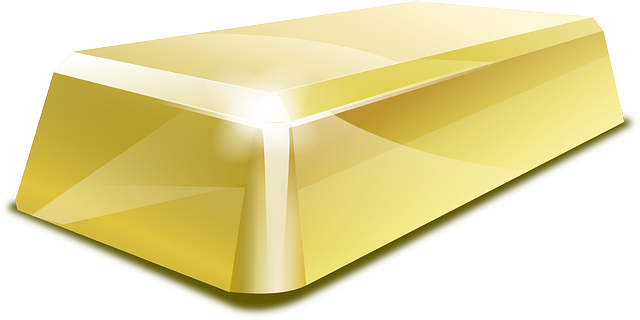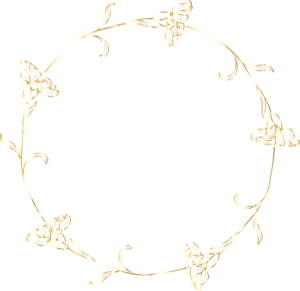
Gold IRA accounts allow individuals to diversify their retirement portfolios with physical gold while benefiting from the same tax advantages as traditional IRAs. These accounts accept gold coins, bars, and other IRS-approved precious metals. To transfer existing retirement funds into a Gold IRA, one must initiate a rollover process, either directly or indirectly, ensuring adherence to IRS regulations to avoid taxable events. A reputable custodian is essential for managing the purchase, secure storage, and regulatory aspects of gold investments. Investors must familiarize themselves with acceptable gold types, like American Eagle and Canadian Gold Maple Leaf coins, and navigate the rollover process within a 60-day window. Eligible rollover sources include other IRAs or employer-sponsored plans, contingent on reaching age 59½ or having a distribution for IRS-recognized reasons. Choosing a compliant precious metals dealer with a good track record is crucial, as they will facilitate the process and ensure your investment meets Gold IRA guidelines. Direct rollovers are simpler but fixed, while indirect rollovers offer more flexibility but require careful timing. Whichever method you choose, thorough record-keeping and professional advice are recommended to ensure a successful transition and maintain the tax-advantaged status of your retirement savings.
When considering a diverse and secure retirement portfolio, exploring the avenues of precious metals investment can be a prudent decision. Among these, Gold IRA accounts stand out as a valuable option for those looking to hedge against inflation and market volatility. This article serves as a comprehensive guide for navigating the Gold IRA rollover process, from understanding eligibility and selection of precious metals to ensuring compliance with IRS regulations. Whether you’re an experienced investor or new to retirement planning, this guide will illuminate the path to incorporating gold into your retirement strategy effectively. Join us as we delve into the intricacies of Gold IRA accounts, from the types of assets permitted by the IRS to maximizing the benefits of gold in your investment portfolio. With careful consideration and informed decisions, a Gold IRA can be an integral component of securing your financial future.
- Understanding Gold IRA Accounts: A Comprehensive Overview
- The Gold IRA Rollover Process: Step-by-Step Guide
- – Assessing Eligibility for a Gold IRA Rollover
- – Choosing a Trustworthy Precious Metals Dealer
- – Initiating the Rollover: Direct vs. Indirect Transactions
Understanding Gold IRA Accounts: A Comprehensive Overview

Gold Individual Retirement Accounts (IRAs) offer a unique investment opportunity for those looking to diversify their retirement portfolio with precious metals. Unlike traditional IRAs that typically invest in stocks, bonds, or mutual funds, a Gold IRA account allows for the direct ownership of gold coins, bars, and other approved precious metals. This form of retirement savings is subject to the same tax laws as traditional IRAs, but it provides a hedge against inflation and market volatility.
To initiate a Gold IRA rollover, it’s crucial to understand the process involves transferring funds from an existing retirement account, such as a 401(k) or another IRA, into a self-directed IRA that permits investment in gold and other precious metals. The Internal Revenue Service (IRS) sets strict rules for rollovers to ensure they are not considered taxable events. Prospective investors must select a trustworthy custodian that specializes in Gold IRAs, as these entities manage the account on behalf of the investor and handle the purchase and storage of the physical gold. It’s imperative to work with a custodian that is experienced in compliance with IRS regulations to ensure a seamless and compliant rollover process. Additionally, investors must be aware of the types of gold permissible in these accounts, which typically include American Eagle coins, Canadian Gold Maple Leaf coins, and certain other gold bullion and bars meeting certain fineness criteria. Understanding these specifics is key to navigating the Gold IRA rollover process successfully and securing a financially diverse future.
The Gold IRA Rollover Process: Step-by-Step Guide

When considering a transition to a Gold IRA account, understanding the rollover process is crucial for a smooth and compliant transition. The first step involves requesting the distribution of your funds from your current retirement account directly to a self-directed IRA custodian that specializes in precious metals. This process is known as an indirect rollover, where funds are temporarily placed into an intermediary account before being transferred into your Gold IRA account. Ensure you communicate with both your current IRA custodian and the new Gold IRA custodian to facilitate this transfer effectively.
Once your funds are in the custodian’s account, you have 60 days to complete the rollover to the Gold IRA account. It’s important to adhere to this timeline strictly, as any delay beyond this period could result in taxable income. During this window, you must decide on the allocation of your funds into gold and other approved precious metals. Typically, the IRS mandates that your Gold IRA accounts include only certain types of bullion and coins that meet fineness requirements. Collaborate with your custodian to purchase and transfer these assets into your account, thereby completing your Gold IRA rollover process. Remember to keep records of all transactions for accountability and tax reporting purposes.
– Assessing Eligibility for a Gold IRA Rollover

When considering a rollover into a Gold IRA account, it is imperative to first assess your eligibility for such a financial maneuver. Eligible rollovers typically originate from other retirement accounts, such as traditional or Roth IRAs, or employer-sponsored plans like a 401(k) or 403(b). To determine if you qualify, you must have reached the age of 59½, or the distribution from your existing plan should be due to one of the IRS-specified reasons, which may include reaching retirement age, termination of employment, or an IRS-dictated distribution event. It’s also crucial to ensure that the funds are directly transferred to the Gold IRA custodian to avoid any taxable events. Gold IRA accounts offer a unique opportunity to diversify your retirement portfolio with physical precious metals, but the rollover process must be executed in accordance with IRS regulations to maintain the tax-advantaged status of your retirement savings. Understanding the intricacies of these rules is key to successfully transitioning your assets into a Gold IRA account and securing your financial future.
– Choosing a Trustworthy Precious Metals Dealer

When transitioning to a Gold IRA account via a rollover, selecting a trustworthy precious metals dealer is paramount. The dealer you choose will play a significant role in guiding you through the process and ensuring your investment aligns with your retirement goals. It’s crucial to conduct thorough research to find a reputable dealer. Look for dealers who are accredited by the Better Business Bureau (BBB) and those who have no complaints on record with the BBB or Consumer Financial Protection Bureau (CFPB). Additionally, ensure the dealer is compliant with Internal Revenue Service (IRS) regulations regarding IRA-approved precious metals. Dealers should offer a diverse selection of gold products, such as coins and bars that meet the purity standards set by the IRS for Gold IRAs. Their transparent pricing and clear communication will provide confidence in your transaction. By partnering with a well-established and reputable dealer, you can navigate the Gold IRA rollover process with assurance, knowing that your investment is backed by a reliable and compliant source in the precious metals industry. Always verify the dealer’s credentials, read customer reviews, and compare offerings to make an informed decision that supports your long-term financial strategy.
– Initiating the Rollover: Direct vs. Indirect Transactions

Navigating the process of rolling over to a Gold IRA account involves understanding the two primary methods available: direct and indirect rollovers. For those looking to transfer funds from an existing retirement plan, such as a 401(k) or traditional IRA, into a Gold IRA account, the choice between these two options is pivotal. In a direct rollover, the funds are transferred directly from the old retirement account to the new Gold IRA account. This method is often favored as it eliminates the need for the account owner to handle the funds personally, ensuring compliance with IRS regulations and avoiding potential tax penalties. The financial institution managing your current retirement plan will send the funds directly to the custodian of your Gold IRA, streamlining the process and simplifying record-keeping.
On the other hand, an indirect rollover involves a two-step process. First, the funds from your existing retirement account are deposited into a traditional IRA, which you control. You then have 60 days to transfer those funds into your Gold IRA account. While this approach provides more flexibility as it allows for a 60-day window to consider various Gold IRA account options, it requires careful attention to timing and adherence to IRS rules to avoid penalties and taxes on the distribution. It’s crucial to plan and coordinate the transfer carefully to ensure a smooth transition into your preferred Gold IRA accounts. Both methods have their advantages and should be chosen based on individual circumstances and preferences. Consulting with a financial advisor or a tax professional can provide personalized guidance tailored to your specific situation.
Navigating the Gold IRA rollover process can be a prudent step for investors looking to diversify their retirement portfolio with physical gold and other precious metals. This guide has illuminated the critical aspects of Gold IRA accounts, from assessing eligibility to selecting a reputable dealer. Whether opting for a direct or indirect rollover, understanding the nuances of each transaction type is paramount. By following the detailed steps outlined in this article, investors can confidently proceed with their rollover, ensuring their retirement savings are positioned within a Gold IRA account that aligns with their financial objectives and risk tolerance. With the right information at hand, the transition to a Gold IRA can be a strategic move towards a more diversified investment future.







